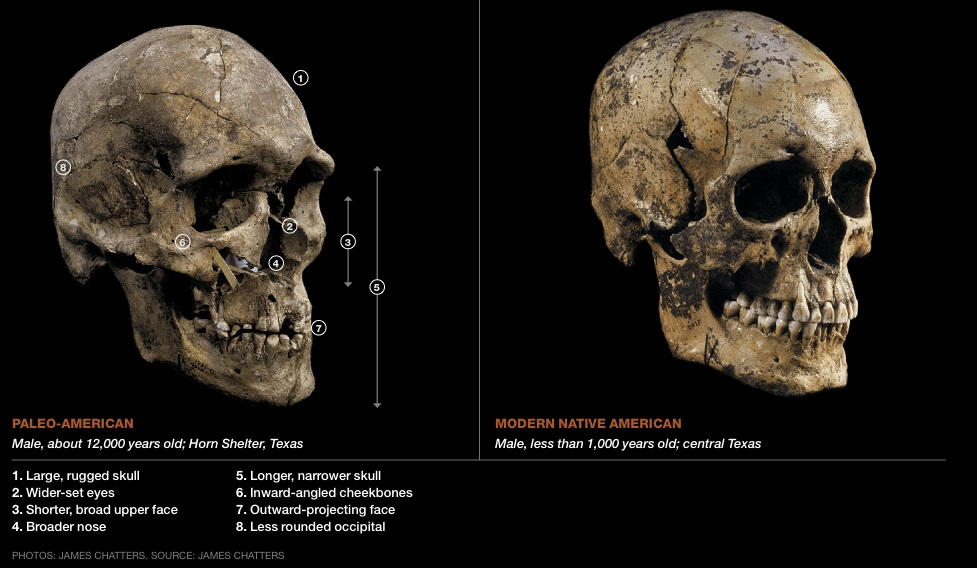I'm not sure it's reasonable and useful coming to put my word here but?
1- brachycephally occurred in several times and places, among previously dolichocephalic pops.
2- 'cromagnoids' were not 'brünnoids/capelloids: this last group of types seems come from East (Ukraina?) later, less through South at first sight, compared to "older" 'cromagnoids'
3- It's true it seems brachycephally developped easier among 'cromagnoids' beginning around 6000 BC, seemingly. But it's uneasy to be too affirmative. My personal opinion is that the Mesolithic various mix of 'cromagnoids'+'brünnoids' in Europe knew a progressive brachycephalization, for unkown causes: proposed: iodin (far from sea, moutainous regions) plus/or neolithization (including food, physcial activities changes and more small circles of mating, all acting for differentes causes. I want not go into details here, there is no accord. Neolithization seems a bit too late for the first sub-brachyphalsobserved in Western Europe: but it could have acted upon 'alpine' perhpas derived from brachycephalized dominantly 'cromagnoids' pops, separating them partly from 'borreby' types. That said, 'borreby' types seems appearing in Scandinavia North-Germany relatively lately (3000 BC), maybe coming from East (S-E Baltic regions?); we know eastern HGs were larger than western HGs
4- brachycephalization occurred too among 'mongoloids' or 'east-asians' - seemingly in an independant way. And the result Partial brachycephalization occurred too among forest SSA ('negroids') and some others: ancient Congo and around and some other places of Black Africa without visible link between them at first sight
5- the most of our today features separating us in a striking way, were not present 100000 years ago, or very less marked
6- the way modern groups separated them from older branches is neither linear nor simple, nor shared by all new branches: some features are almost exclusives to 'negroids', 'europoids' and 'mongoloids', other features are not exclusive, or innovations are not shared by all members of these big rough groupings: but some groups of Humans did not participate in this rough global typification (english?): old South-East Asians (Papoos, Australoids, Veddoids) or some elements among Amerindians; their look evolved, but no so far as others; Australoids seem the closer to "primitive" forms (but look at their long legs), North Amerindians seem not having choosen between 'europoid' and 'mongoloid'; here I simplify a bit - look at Jomon people, and today Aïnous!
7- old pops of BA in Central Asia until Siberia were strikingly 'europoid': they were at the opposite of 'mongoloids', even compared to the geographically closer ones - some proto-Finns could be a bit closer to this BA people, but it's difficult to tell if they are crossings or old undifferentiated forms. So, no! the supposed I-Eans of eastern Steppes were not something close to Kets or whoever you could will.
&! stature: Poles are definitely NOT among high statured Europeans,as a mean, and they never were; some regions it's true were a bit up the average, but some eastern Poland regions were very far under this average stature; Nothing to be compared to Scandinavians or West-Balkans pops of today or of past;
typical Corded were tall, dolichocephalic, leptoprosope, very long but bonny rugged enough faced (zugomatics), long bodied; something evocating for me 'nordic' + remnants of eastern 'brünnoid', these last ones not so far from some protosomething present in the 'indo-afghan' type, what push to caution: 'bünnoidlike' into 'indo-afghan' or already some imput of less rugged 'indo-afghan' types in Steppes modifying the mean? here again: no 'mongoloid' - according to specialists, the first Scythians close to Siberia men were without 'mongoloid' imput concerning body, the 'mongoloid' element increased as time passed







